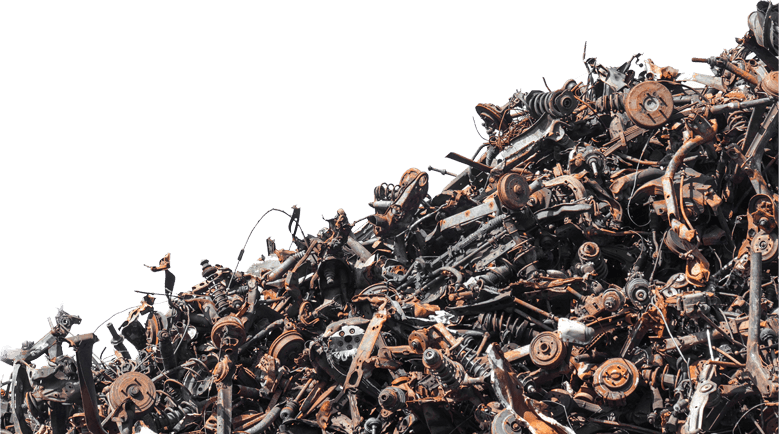In an era of mounting environmental concerns, resource scarcity, and climate change, Australia is rethinking how materials are produced, consumed, and disposed of. A solution gaining increasing traction is the circular economy, a system designed to eliminate waste and keep resources in use for as long as possible. At the heart of this system lies a critical but often overlooked player: construction waste recycling and scrap metal recycling. In industries like construction and manufacturing, which are traditionally resource-intensive, embracing circular practices is not only environmentally responsible but also economically sound. Keep reading to find out what a circular economy is and how scrap metal recycling supports its growth.
Understanding the Circular Economy
A circular economy contrasts sharply with the traditional “take, make, dispose” linear model. Instead of extracting raw materials, using them once, and discarding the waste, a circular system focuses on keeping products, components, and materials in circulation through reuse, repair, remanufacturing, and recycling.
In this model, waste becomes a resource, and materials are given multiple lives. It’s about designing products with longevity, making processes more efficient, and ensuring that when items reach the end of their life, they’re not sent to landfill, but transformed into valuable inputs again.
Why Metal Recycling Is Crucial
Among all recyclable materials, metals are uniquely valuable. Unlike plastic or paper, metals can be recycled indefinitely without losing quality. This means scrap steel, aluminium, copper, and other metals can be continuously reused in construction, manufacturing, and infrastructure projects without compromising performance.
The Role of Metal Recycling in Construction
The construction industry is one of the largest consumers of raw materials in the world. In Australia, construction waste accounts for roughly 44% of the country’s total waste output, according to the Australian Bureau of Statistics. This includes large volumes of metal, steel beams, roofing sheets, reinforcing bars, aluminium window frames, copper piping, and more.
Here’s where metal recycling steps in.
By sourcing recycled metals instead of virgin materials, builders and developers can significantly reduce their project’s environmental impact. Recycled steel and aluminium are already widely used in:
- Structural frameworks for buildings and bridges
- Rebar for reinforcing concrete
- Roofing and cladding materials
- Window frames and partitioning systems
- Piping and plumbing components
Modern recycling facilities in Melbourne prepare scrap metals to meet construction-grade specifications, ensuring builders receive high-quality, certified materials that comply with Australian building standards.
The Role of Metal Recycling in Manufacturing
Manufacturing is another sector where metal recycling is driving innovation and sustainability. Whether it’s heavy machinery, vehicles, electronics, or consumer goods, most products require some form of metal in their production. Incorporating recycled metal into these products allows manufacturers to lower production costs, reduce reliance on imported raw materials, and minimise their environmental impact.
For Australian manufacturers, especially in Melbourne’s industrial suburbs, recycled metal provides a reliable and local source of material. This is increasingly important in a world where global supply chains are under strain, and geopolitical and economic factors have made raw material imports more volatile and expensive.
Manufacturers use recycled metals for:
- Automotive components, including panels, engines, and wheels
- Whitegoods and appliances, such as washing machines and refrigerators
- Electronics, including circuit boards and housings
- Machinery and tools used in production lines
- Packaging, such as aluminium cans and containers
By partnering with local recyclers, manufacturers can also improve their waste management systems. Scrap generated during production can be collected, recycled, and reintegrated into the manufacturing cycle, closing the loop in a real, tangible way.
Challenges and Opportunities
While metal recycling has a critical role in building a circular economy, it is not without challenges. These include:
- Contamination – Mixed materials and non-metal contaminants reduce recycling efficiency
- Education gaps – Many businesses and individuals are unaware of what metals can be recycled
- Infrastructure limitations – Some regions lack access to modern recycling facilities
- Market volatility – Global scrap metal prices can affect profitability
However, these challenges also present opportunities. Increasing investment in advanced sorting technologies, improving regulatory support, and running education campaigns can help overcome barriers and boost recycling rates across Australia.
Melbourne, in particular, is well-positioned to lead the charge. With a robust industrial base, growing population, and ambitious climate targets, the city stands to benefit enormously from a more circular, metal-smart economy.
Do You Need a Scrap Metal Recycling Facility?
Look no further than Metal Men Recycling. We make selling scrap metal a straightforward process so that you can contribute to the circular economy in an easy way. When you need to sell scrap metal, get in touch with Metal Men.
Contact us at 03 5941 6677 or fill out our online contact form and we will get back to you.

